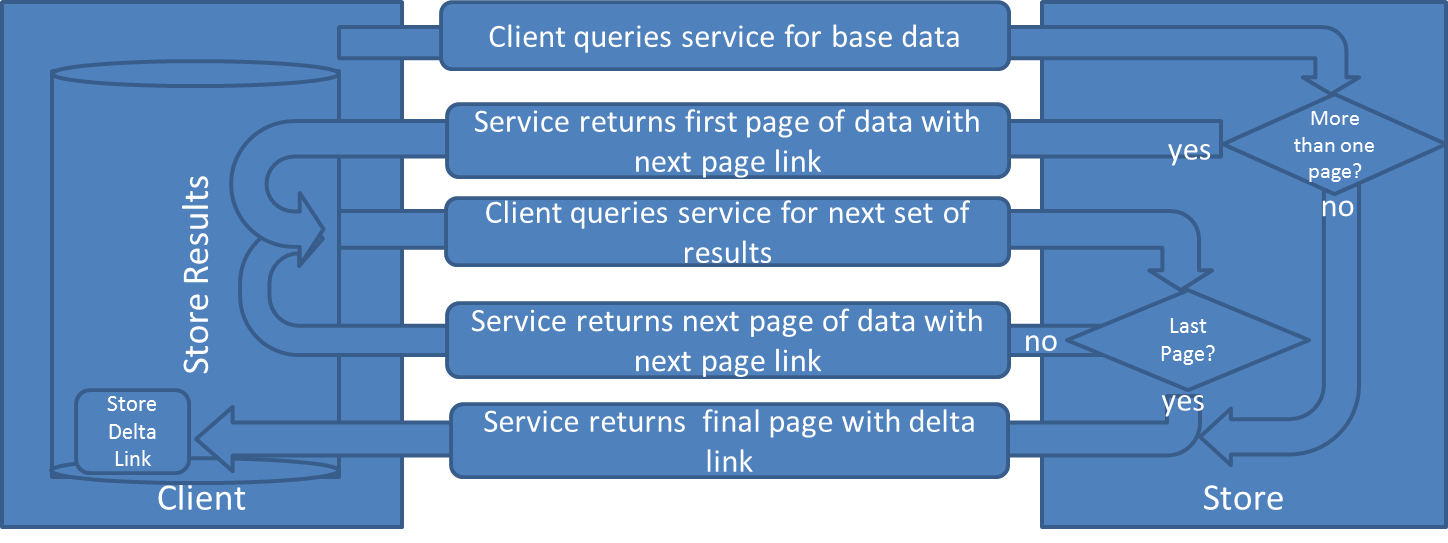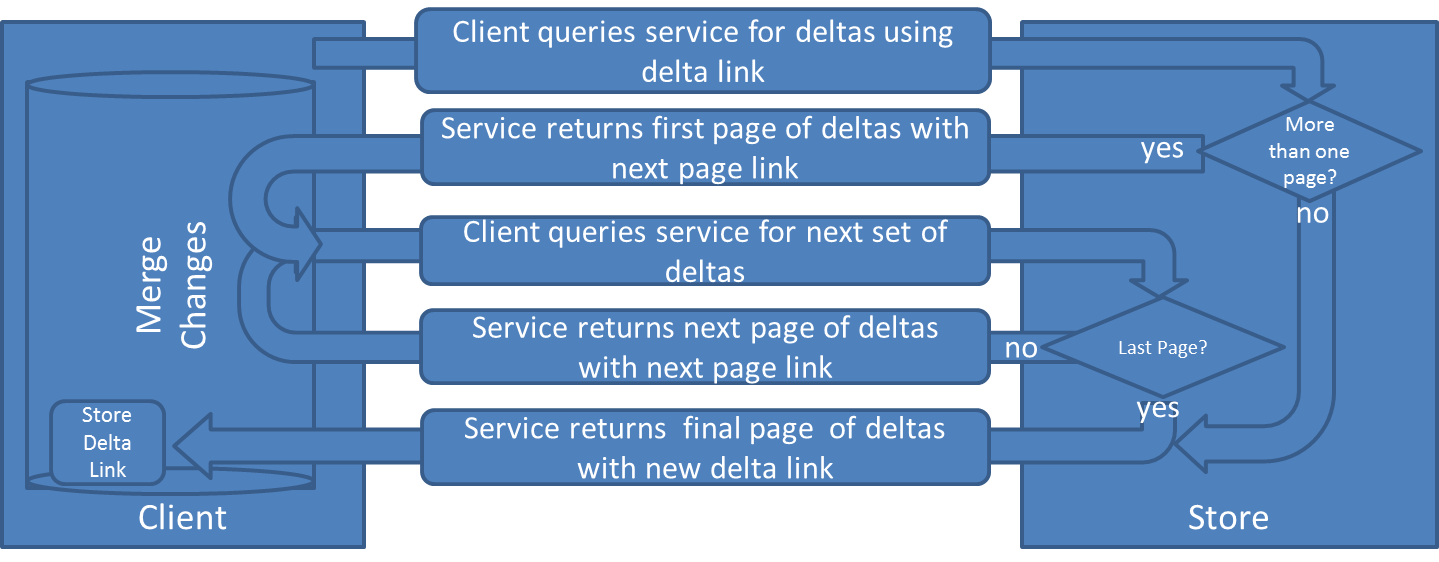odata
Server-Driven Paging
Basic Choreography
When a client reads a list of things, and the result is too long to return in one chunk, server-driven paging can kick in.
This essentially means that the server returns the first part of the response, plus a next-link. For a JSON response this means there is a member @odata.nextLink in the outermost object of the response, whose string value is a URL that the client can use to GET the next part of the response.
The next part may again contain an @odata.nextLink, until the client receives the final page, which does not contain an @odata.nextLink.
Or the client can give up because it had enough already before reaching the end of the result.
Server-driven paging also helps protecting against denial-of-service attacks by limiting results to a reasonable page size: large enough to not get clogged down with next-link requests, and small enough to not overly stress server resources when producing the next page.
Btw., we didn’t invent this, this was copied from the Atom Publishing Protocol, which was all the rage back in 2009.
Advanced Choreography, combined with Delta
Delta is a mechanism to only receive changes (inserts, updates, and deletes) to a large list of things that has already been read some time ago.
As the initial list is typically large, it is read in combination with server-driven paging.
Initial Load
The initial load is triggered by the client, requesting all relevant content:
GET /stuff?$filter=color eq 'red'
If that content is large, the server uses server-driven paging and only sends the first page of the requested data with an @odata.nextLink.
As described above the client follows next-links until it reaches the last page.
The last page now contains a delta-link (in JSON a member @odata.deltaLink) and of course no next-link, indicating to the client that the server supports delta load.
The client stores that delta-link for a later refresh.

Delta Load
When the client wants to refresh the initial content some time later, it sends a GET request to the delta-link that it received and stored earlier.
The server responds with all relevant content that has been added, changed, or deleted since the server issued that delta-link.
If the delta is large, the server uses server-driven paging and only sends the first page of the delta, with a next-link.
Again the client follows next-links until it reaches the last page with a delta-link, which the client again stores for the next refresh cycle.
